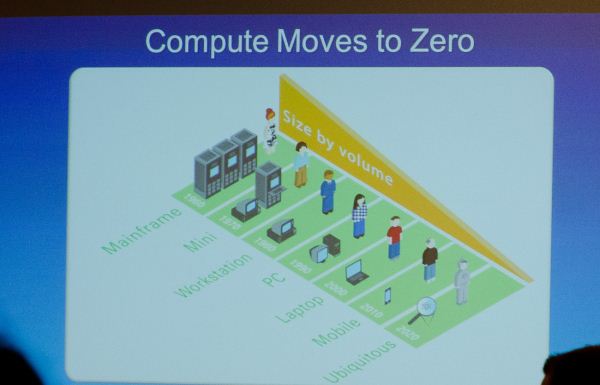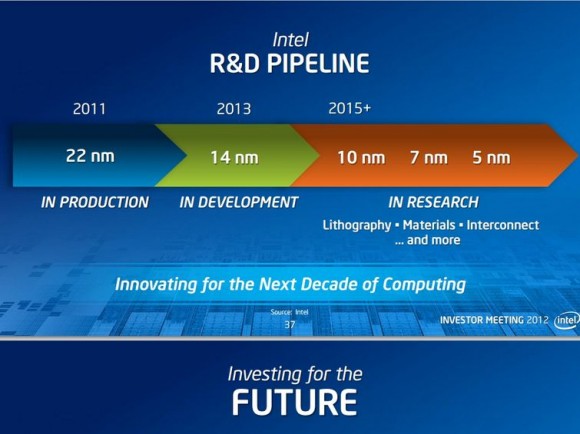Blazkowicz
Legend
oh crap, it's HSA and not FSA silly me. F meant "Fusion" and H means "Heterogeneous" to emphasize 3rd party IP can be part of it.
Follow along with the video below to see how to install our site as a web app on your home screen.
Note: This feature may not be available in some browsers.
oh crap, it's HSA and not FSA silly me. F meant "Fusion" and H means "Heterogeneous" to emphasize 3rd party IP can be part of it.
FSA will now be known as Heterogeneous Systems Architecture or HSA. The HSA platform will continue to be rooted in industry standards and will include some of the best innovations that the technology community has to offer.
How good is Xenos as GPGPU?


Exploiting the latter benefit, we have the realization above. By 2020, which assuming a 2 year cadence between process nodes means we're talking about silicon built on a 5nm process, Intel expects that the size of "meaningful compute" approaches zero. It's not totally clear what Intel defines as meaningful compute, but if you keep in mind that a single AMD Jaguar core measures < 3mm^2 at 28nm, it's not a stretch to believe that we'd have quite a bit of compute available nearly for free at 5nm. Assuming perfect scaling (not going to happen), a 100mm^2 die at 22nm would measure only 6.25mm^2 at 5nm. Even if you don't get perfect scaling, Moore's Law can give us the performance we get in a smartphone today in a size that's small enough and cheap enough to make that we can integrate it anywhere (smart-tables anyone?).
Future advancements could allow them to stack the DRAM onto the package (and artificially impair the latency keep the specifications identical), as a possible solution to the I/O pin limitation.I'm not an expert either by far. I believe that the issue is not the size of the memory controller but the physical IO (pins or bumps at the back of the chip).

I assume they produce the memory based on the expected standard, so if something changes before the standard is finalized, I'm curious if there's any chance the memory need to be reworked to comply.Actually, I think DDR4 will be the most likely and sensible choice.
The DDR4 standard is late. I don't think the memory modules themselves are.
This patent says NOTHING OF THE SORT! Did you read the article, even just the intro, or did you just look at the picture labelled by the writer as "Future Xbox"? It's an idea for projecting the game into the room, appreciating that peripheral vision is low quality so doesn't need a super detailed projection.This new Microsoft patent shows that the future Xbox won't have Kinect attached, (maybe not even bundled with the console?) but just as an accesory you can use separatedly.
Shifty, I re-read the article just in case I missed something, but if those figures were drawn and created by Microsoft, what exactly is the likelihood that Kinect and the depth camera are going to suddenly change from being standalone products to be part of the console...? o_o;This patent says NOTHING OF THE SORT! Did you read the article, even just the intro, or did you just look at the picture labelled by the writer as "Future Xbox"? It's an idea for projecting the game into the room, appreciating that peripheral vision is low quality so doesn't need a super detailed projection.
Rule number 1 for patents : A company filing a patent is not proof of intention to produce that product, let alone an indicator into what their next product will be.
This patent tells us nothing about Xbox 3.
Are you implying that for a "future xbox" to qualify for the "includes kinect" label, the Kinect has to be built into the XBox chassis? Do you realize what a silly idea that is? The Wii Sensor bar is included with every wii, and somehow it is not built into the wii chassis. It makes no sense to build the Kinect into the XBox chassis for a number of reasons, one of them being audio input, another being, as you put it, having to move the box around to account for player positions. That does not in any way preclude the idea of including a kinect sensor in box and not selling it as an accessory, just like the wii sensor bar.Shifty, I re-read the article just in case I missed something, but if those figures were drawn and created by Microsoft, what exactly is the likelihood that Kinect and the depth camera are going to suddenly change from being standalone products to be part of the console...? o_o;
But most of all... it says "Future Xbox" there for the world to see. Let that sink in for a moment: minimal number of cables coming out the console of the figure, a Kinect system, mics, a new kind of camera, etc.
Okay, being realist maybe you are right.... but what an intellectual, student-like, scholar line of thinking you have, Shifty. The news are weird, just telling it like it is. But the picture doesn't seem to be fake. What you see what you get.
It can make sense because I don't imagine people moving the console around depending on their position to play Kinect based games.
That's added by the website. Patents do not label their figures with anything other than numbers, and never brand names like XBox and Kinect. The actual device (label 110) is described as something like a "memory system linked with a logic processing system" as patent jargon for "a computer device". Also, a future Xbox could mean any future Xbox. And finally, patents are drawn up to illustrate an idea, and the drawings typically reflect current ideas. The idea for this probably comes from RnD where they have used Kinect as is to drive the environment scanning, and so it's Kinect portrayed as is in the diagram, just because they wanted to show the room-viewing camera system in their representation of one embodiment of the patent. Any camera scanning system could still be embedded in the console, even if that'd be a poor choice for flexibility of positioning. And as bkilian says, included in XB3 doesn't necessitate built into the case!But most of all... it says "Future Xbox" there for the world to see.
I'm sure it'd be cheaper to produce a sensor-bar and wiimote-less wii too, and just ship with the classic gamepad controller. I wonder why they haven't done it?If Kinect cant be integrated into the chassis per se, then it will always be an option to produce cheaper Kinect-less SKU's. Even if say at launch Kinect is bundled with every next box, it never has to stay this way.
I've always noted this.
It does, however, show that the magical room projector appears to be able to pass right through objects like the sensor without leaving shadows on the wall...
